Scaling content isn’t just about publishing more. It’s about building systems, strategy, and using the right tools.
We asked a few SEO and content pros how they scale their content production without sacrificing quality.
In this article, you’ll learn how they:
- Standardize processes to reduce chaos
- Use templates and briefs to drive consistency
- Manage multiple writers efficiently
- Leverage AI and automation without losing the human touch
If your content team feels overwhelmed or your articles lack consistent quality, these proven strategies will help you scale smarter.
Let’s see what we’ve got!
Table of Contents
Scaling Content is Not Creating Crap at Scale
Running on a circular path at the speed of light will only take you back to your starting point. Even though it might appear you are making progress, it’s progress in futility.
That’s the same case with creating crap content at scale. You might get the initial growth, but the result will be worse than the beginning.
A practical example is the story of the SEO heist, which was a household tale in 2023.
An SEO specialist copied his competitor’s sitemap and turned the list of URLs into articles. He used an AI tool to create 1800 articles in a few months.
Did his strategy work? Yes, for a few months.
Within a few months, he drove over a million monthly organic visitors to his site, which undoubtedly generated some conversions.
But was it worth it? A big NO!
He boasted about his achievement on X, which caught Google’s attention. However, the site lost over 40% of its organic traffic in four months.
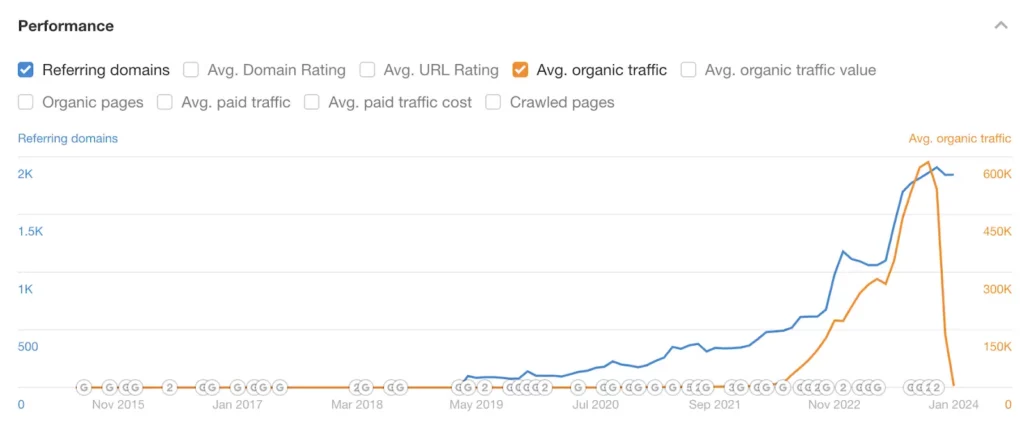
Scaling content production with black-hat SEO practices might generate quick wins, but the long-term damage to your brand might be unfixable.
Similarly, creating less-than-par content in the name of scaling content production risks penalizing your site from search engines and disrupting your brand trust.
Note: Crap content can rank on SERPs, but it doesn’t have long-term benefits and most often doesn’t convert.
You should prioritize scaling the quality of your content.
Create a process to keep your content flowing while increasing quality.
How do you do that?
Expert Strategies to Scale Content Production
Several SEO agencies and content teams are creating thought-provoking content at scale. You can join the list by replicating their strategy.
We surveyed a few content experts with proof of efficient content production and compiled their patterns of content scalability.
Here’s how they scale their content production without sacrificing quality:
Plan Strategically, Define Goals, and Create a Content Calendar
Joe Pulizzi, Founder of Content Marketing Institute, said, “Clear goals are the foundation of every successful content strategy. Without them, you’re just creating noise.”
Without a clear goal, your content strategy is like driving full speed with no destination. You’re only burning fuel and going nowhere.
Before you brainstorm your next article title, know who your content is for and why you’re creating it. Without answering these questions, your content strategy will be ineffective.
Also, other than reading your blog post:
- What do you want your audience to do?
- What step should they take next to move further down the sales funnel?
- How do you get them to take that next step from your blog post?
Most importantly, you should define the number of articles you can create monthly.
It is better to make fewer articles with consistent quality than to have a lot of content in a month and nothing for several weeks.
With the information gathered, you can map your content to your buyer’s journey and create a structured content calendar that fills your content production gap.
At thruuu, creating a content calendar is simple, and we easily generate a large number of article ideas.
The thruuu topic clustering tool helps us to turn a long list of keywords into ideas for future articles. Our content backlog has been filled for many months.
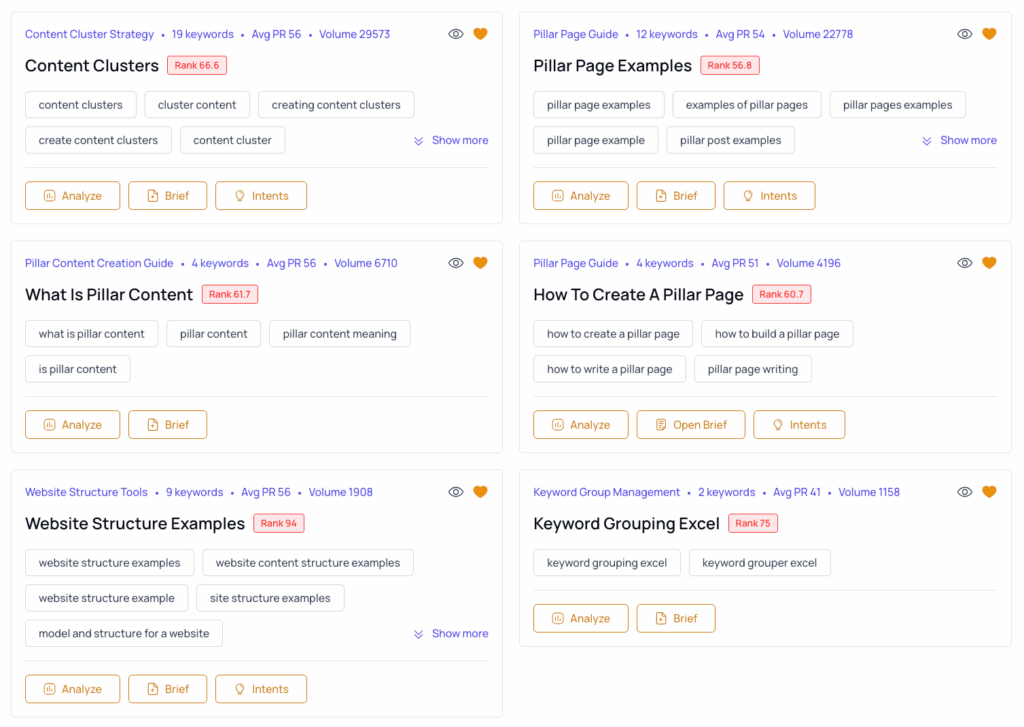
Detailed Briefs & Templates Are Essential
Most of the content experts we interviewed said something in common.
“Standardized briefs and templates are important for consistency and speed.”
For more specificity, see what some of our respondents shared:
Franklin Nwangene, SEO Content strategist at Frankliner, said, “We build processes with content templates that help our writers work better.”
Mohammed Al-Dhahabi, content manager of Modweeb blog, also emphasizes process: “I created a standardized format… to ensure clarity for writers.”
A content brief guides writers by outlining content goals, target audience, key points, instructions, and ensuring quality.
We have never had an issue with our writer at thruuu because we share a detailed brief for every piece of content. The brief is the content building block and quality control measure for perfect delivery.
See the brief for this blog post we shared with our writer.
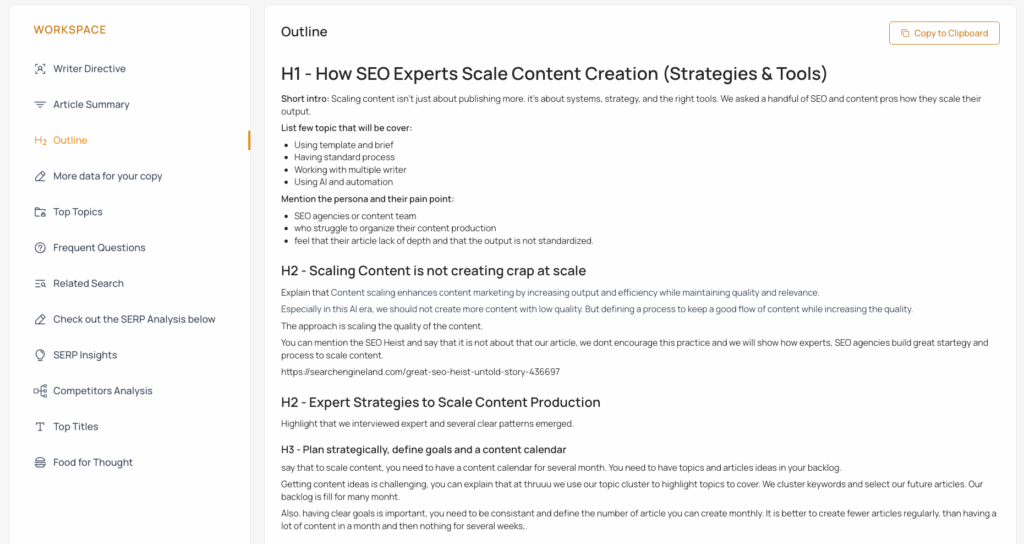
But wait…
If you create 10 articles monthly, that means you have to make 10 briefs monthly. You have to analyze the SERPs for each topic, check competitors’ pages, identify search intent, create an outline, and more.
You might need a neck brace from all the head-shaking you’ll do.
That’s why we use the thruuu content brief generator to create all our briefs. This tool saves 90% of time and helps us effortlessly scale content production.
The tool is suitable for several content formats and creates different brief templates. Whether you’re writing a listicle or a random blog post, inserting pre-written text snippets can save time and ensure consistency.
Most importantly, thruuu brief generator gathers data from the SERP for your topic. That means you don’t have to spend donkey years analyzing your competitors’ pages and identifying your keyword search intent.
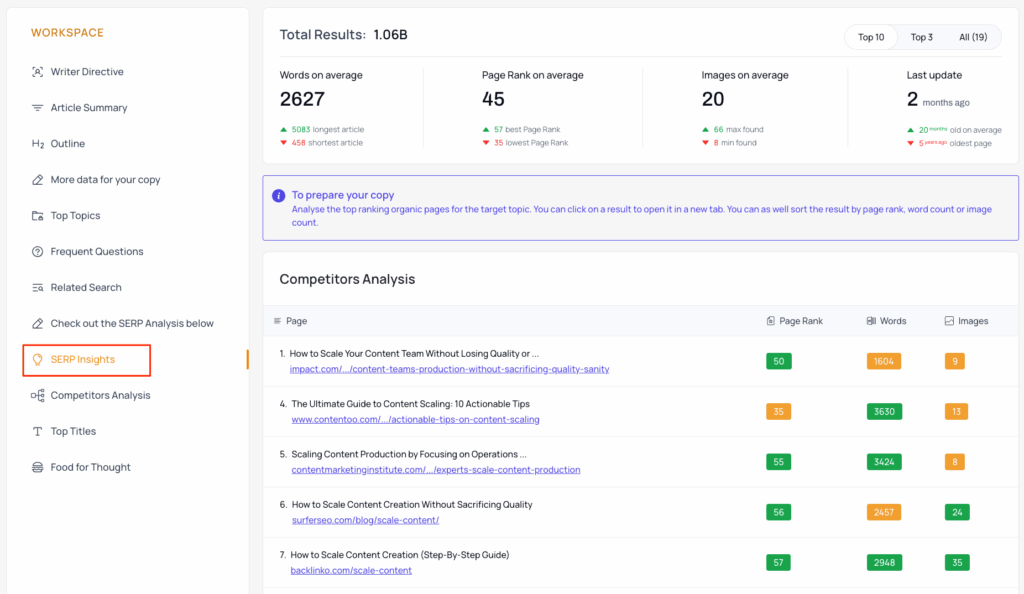
thruuu brief generator also comes with an outline editor that features an AI outline generator, competitor outlines, and the most frequent headings and questions.
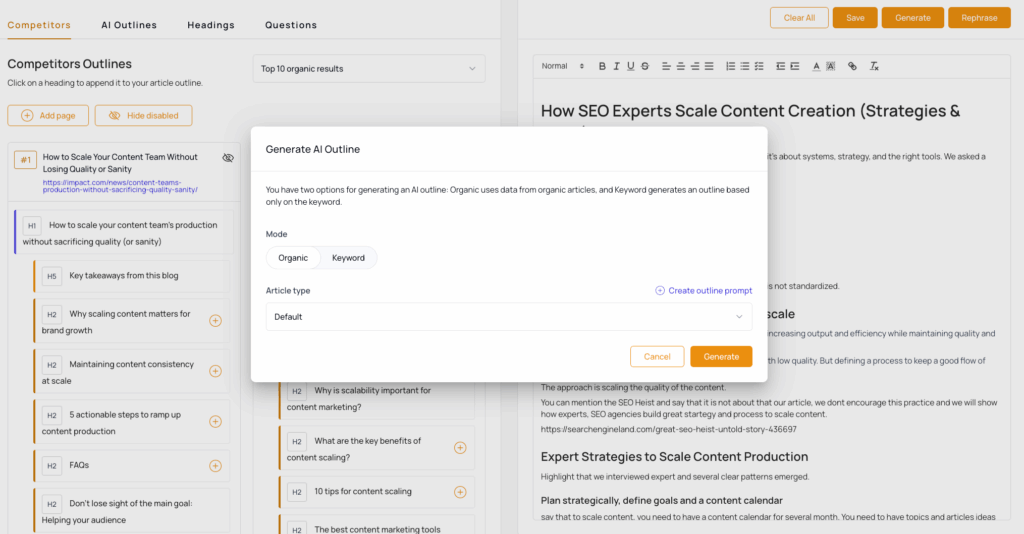
These unique features make it easy to create outlines backed up with data from the SERP and assisted with AI.
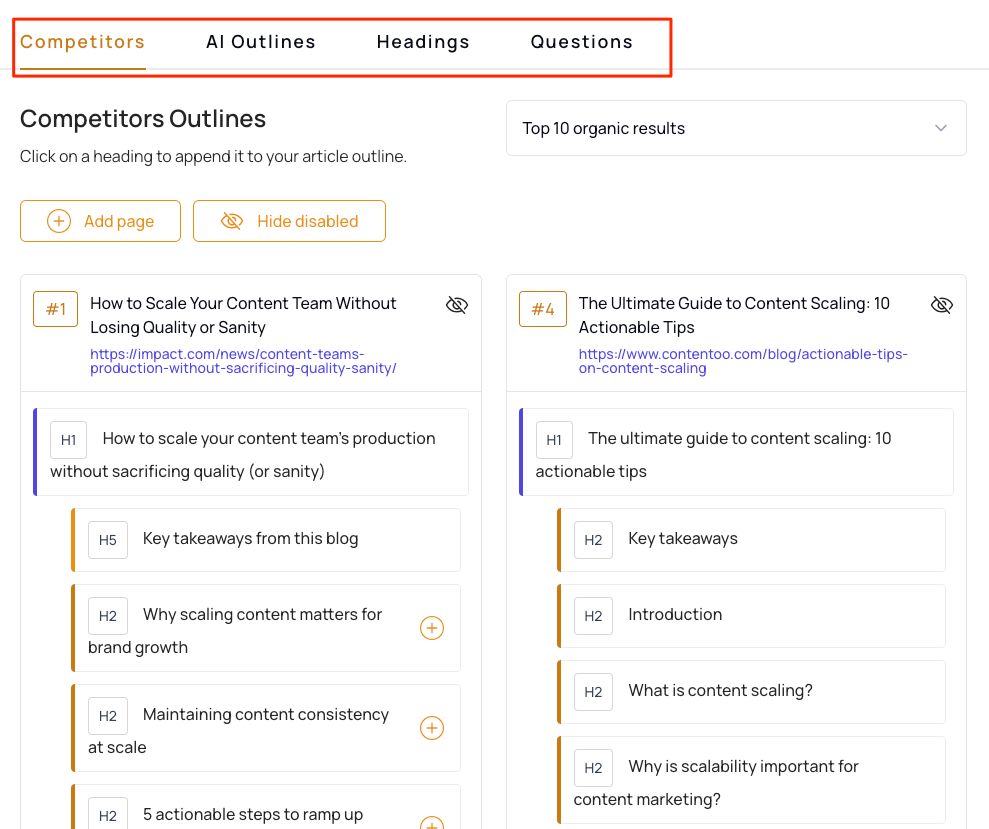
Define Style Guide and Standard Operating Procedures for Consistency
Think of Standard Operating Procedures (SOPs) and editorial guidelines as a playbook your team members refer to when they need to complete a task. They are also detailed guidelines that outline what to do, how to do it, and who should do it on your team.
SOPs make maintaining a consistent client experience easy, enhancing team productivity, and scaling content team operations. Most importantly, new team members can easily flow into your content workflow without depending on senior members.
For example, a content SOP for publishing new blog posts can look like this:
- Define and follow brand guidelines for tone, voice, and style
- Conduct thorough research, serp analysis and fact-check all information
- Define reusable brief templates and article structures
- Develop a detailed content brief including topic, goals, and target audience
- Create an outline to structure the content
- Write the first draft focusing on clarity and depth
- Use relevant visuals, infographics, or multimedia elements
- Optimize content for SEO (keywords, meta descriptions, headers, alt text)
- Perform a multi-step editing process
- Self-edit for flow, coherence, and completeness
- Proofread for grammar, spelling, and punctuation errors
- Fact-check all data and references
- Review content against the brief and brand standards
- Collaborate with editors or other writers for feedback and revisions
- Finalize content and prepare for publication format
- Schedule and publish content according to the content calendar
Hire or Outsource to Writers or Agencies
Michael Rubcke, Digital Growth Manager at Michaelruebcke.de, told us, “Content isn’t made by magic; people make it. We organize and empower authors and focus on industry-savvy authors committed to E-E-A-T principles.”
Hiring or collaborating with multiple writers helps maintain output without compromising on deadlines.
Not just any writers here, but those who:
- Focus on understanding business goals, not just creating content
- Have built expertise in specific industries or content types
- Learn to work alongside AI, not compete with it
- Have developed skills in content strategy, not just execution
- Have mastered the art of turning complex ideas into clear content
At thruuu, we have writers who are among the top 1% of writers because we have an efficient strategy for outsourcing content and working with freelance writers.
Aside from having a defined content strategy, we test and evaluate potential writers before onboarding them.
We start with a small paid test for all the writers using the same brief.
This approach allows us to filter out writers with poor expertise who cannot meet our long-term content needs.
We then build a strong system to improve collaboration with outsourced writers. You can read our complete guide on how we outsource content creation to replicate our results in your team.
Create Workflows and Systems
Task delegation becomes a bottleneck when no defined workflow highlights what each content team member should do.
From our survey, most content teams rely on editorial workflows and pre-defined approval steps. Your workflow document is different from your SOP because it identifies who is responsible for each task of your content production.
For instance, see Backlinko’s content creation workflow.

- The growth manager finds the keywords
- The SEO manager chooses the content format and creates briefs
- The writer creates the outline
- The designer creates the design, and it goes on and on.
This kind of system establishes governance and enhances scalability with minimal effort.
Note: You can automate part of your workflow with AI tools. 70% of our survey respondents have AI automation as a part of their content workflow (we’ll share more about this later).
Repurpose Content
“Content repurposing helps you scale effortlessly and do more with less.” Ross Simmonds, CEO at Foundation Marketing.
Repurposing and distributing high-performing content saves time and broadens your reach to various platforms. Interestingly, it also enhances your brand awareness and keeps messaging consistent.
Chima Mmeje, CEO at Zenith Copy, shared something interesting about content repurposing at the Search Africon 2.0.
She said, “I created a blog post for Moz. I took that blog post and turned it into my Mozcon presentation. I took that presentation and turned it into a webinar presentation. I turned that webinar presentation into a podcast for another brand. I turned the podcast into an infographic for LinkedIn.”
She concluded with this interesting statement, “You don’t need 700 pieces of content to build thought leadership. You need 700 ways to distribute one piece of content.”
Ross Simmonds shares practical ways to repurpose your blog posts into several content formats.
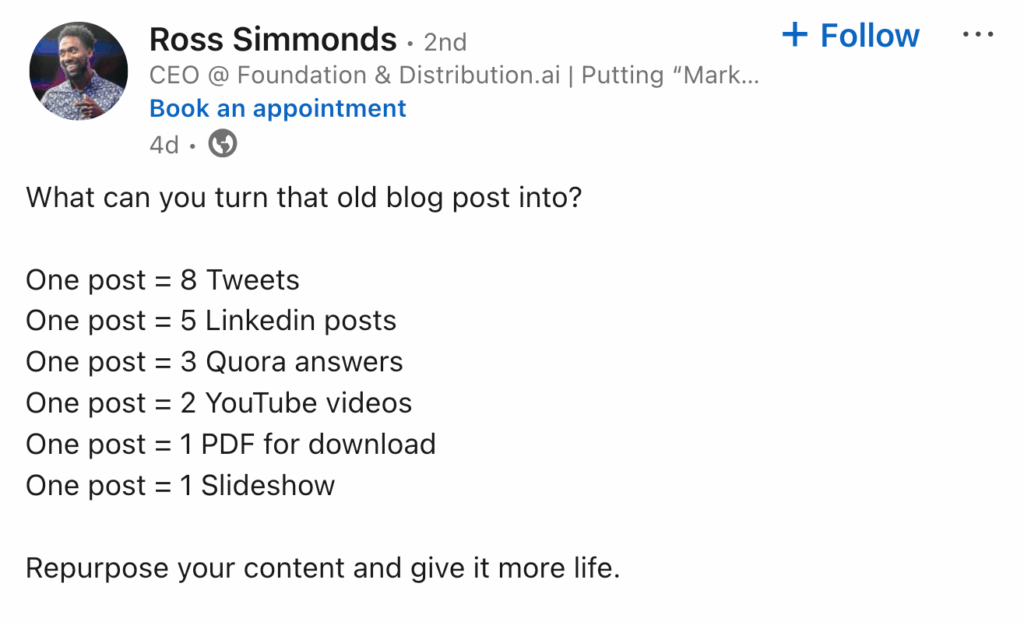
Focus on Content Formats That Convert
Your primary purpose in scaling content production shouldn’t be to fill your content gap. Instead, prioritize business KPIs, such as organic traffic and conversions.
Therefore, identify content types that work, create templates, and scale the production of similar content.
Angela Leoncio, Digital Marketing Manager at Appetiser Apps, said, “ We use tried-and-true content templates, especially for topics that have worked before.”
At thruuu, we discovered that listicles generate more organic traffic and sign-ups for us.
Guess what we did in return?
In the last 12 months, we produced 50% more listicles. We knew the content format that worked for us, and we scaled its production.
See the organic traffic chart for our list article on the top 13 free content optimization tools.
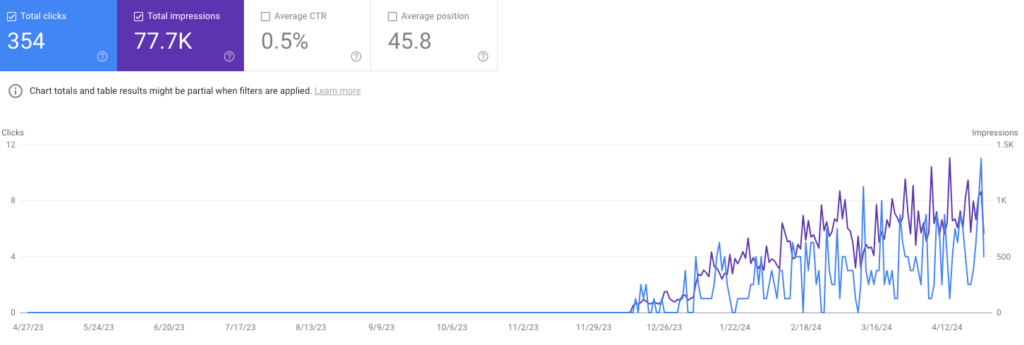
The listicle also had a 6% conversion rate.

Identify what works for you and create a system to scale its production.
Note: If you are a SaaS, you might be interested in the our 3 best SEO strategies.
Use AI and Automation for Streamlined Content Processes
All our survey respondents said they use AI in their content process, but with human oversight.
They use AI tools like ChatGPT and custom GPTs to assist with content ideation, research, brief creation, editing, analysis, and reporting. Some use AI tools to write their meta titles and descriptions.
KennyK3 Digital automates content briefs using the thruuu API and uses no-code tools for scaling.
Kenny King, the Director of SEO at KennyK3 Digital, said,
“I use the thruuu API to automate SERP analysis.
Using Google Sheets, I input the target keyword, which triggers a SERP analysis with thruuu. I then have an automation that takes the top 10 results from that analysis and sends them to a custom GPT. The custom GPT will analyze the top 10 results and create 10 to 20 variations of the meta title and description based on specific criteria in the custom GPT.
This process helps speed up the optimization process and helps me quickly improve pages, especially now since SERPs are changing rapidly.”
Several others mentioned automating research or brief creation using tools like n8n, Make, or internal scripts.
Note: AI tools should be assistant tools, not do-it-all tools. AI can make mistakes and, therefore, require human oversight.
Use AI tools to scale production and bring human brains for creativity, empathy, and new insights.
SEO Content Director at Jellyfish said, “AI speeds up production, but human oversight is irreplaceable for refining tone, accuracy, and engagement.”
Tools to Help Scale Content Production
You can’t scale your content production by manually doing all your tasks.
If you’re serious about growing your content without having endless late nights and stress, these tools can help you work smarter, not harder:
thruuu
thruuu takes off the burden of SERP analysis, brief creation, keyword clustering, and page auditing off your shoulders.
The thruuu SERP analysis tool can analyze Google SERPs for any keyword in one click.
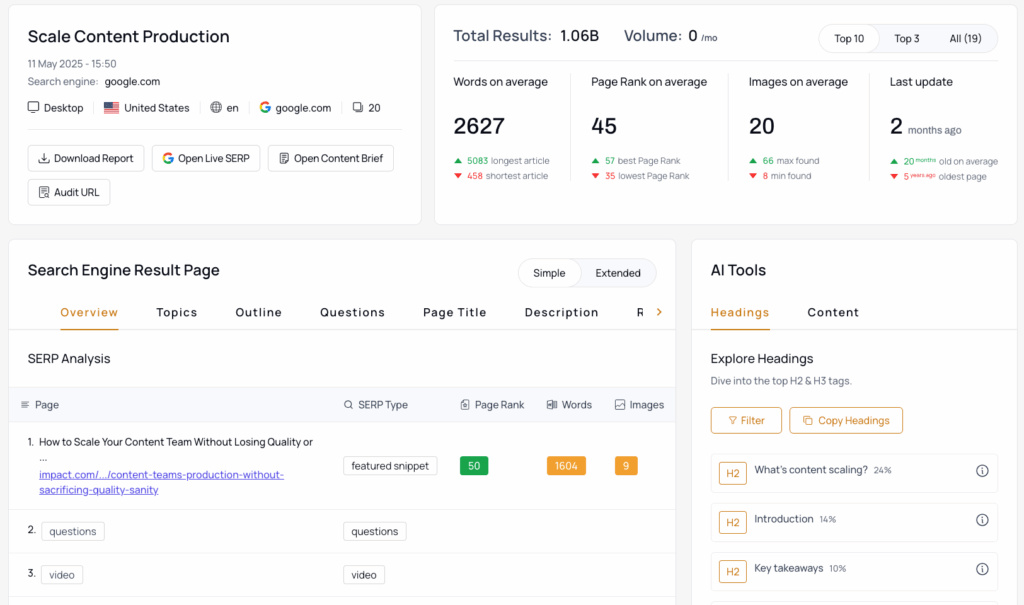
This tool analyzes up to 100 Google results and extracts hundreds of on-page data points to perfect your content.
You can also discover new ideas by examining the structure of your competitors’ content and the most popular topics and questions on the SERP.
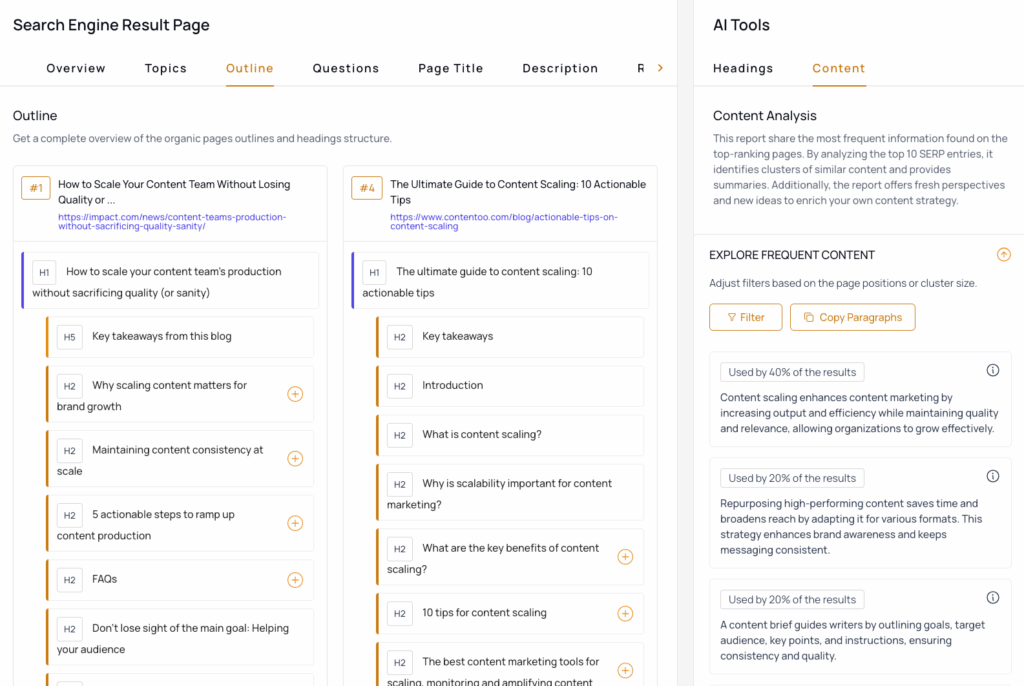
The thruuu content brief generator creates briefs by gathering data from the SERP.
In a few minutes, you can make hundreds of SEO briefs at scale at a fraction of the time it would take to create them manually.
The thruuu keyword clustering tool automatically groups keywords based on search intent using data from Google SERPs.
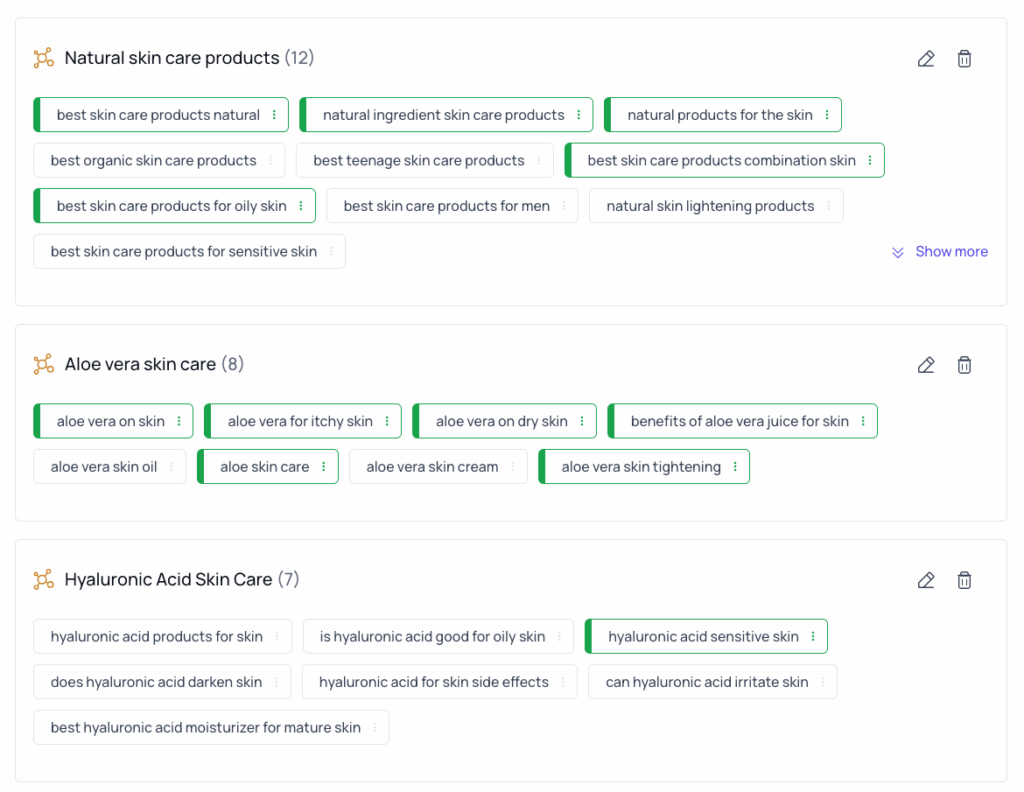
Lastly, the thruuu SERP and Brief API allows you to integrate the tool into external tools like Make or n8n.
Make.com or n8n
Make.com and n8n, among other things, automate repetitive tasks like content scheduling, formatting, and distribution.
They connect different apps so you don’t have to do everything manually. This saves time and keeps your content pipeline flowing smoothly.

For example, when you publish a blog post, the system can automatically share it on social media, update a content calendar, and notify the team.
Once set up, everything runs in the background, so your team can focus on creating content instead of managing it.
ChatGPT and Custom GPTs
Use ChatGPT to automate redundant tasks like:
- Analyzing research reports
- Strengthening points in your blog posts
- Identifying fluff words in content, and more
You can also create custom GPTs for different tasks, such as writing first drafts, comparing content with writing guidelines, repurposing content, and more.
Train ChatGPT how you think. Then, make it earn its spot in your workflow.
At thruuu, we created several GPTs to support with newsletter creation, Linkedin Post or marketingt ideation.
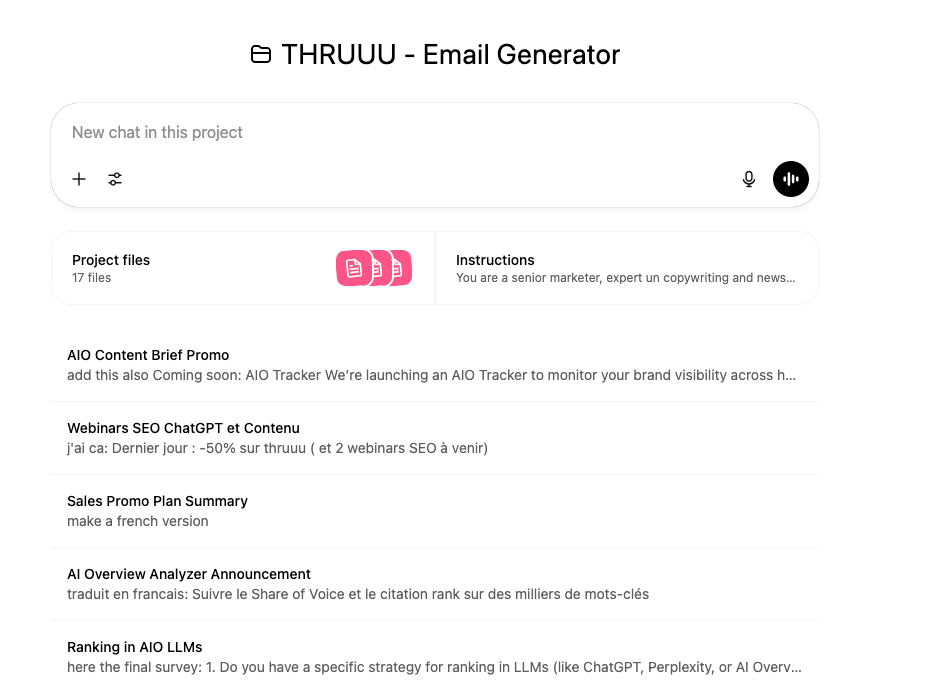
Trello or Clickup
Use Trello and ClickUp to plan, track, and manage your content workflow in one place.
These tools can assign tasks, set deadlines, and visualize progress using boards, lists, or timelines. This keeps everyone aligned and helps the team move faster without missing anything.
What’s next?
Scaling Content Comes with Real Challenges
It’s time to skyrocket your content production and achieve those dream business goals.
But wait…
Every progress comes with its challenges.
Adam M. Grant, Professor at the Wharton School of the University of Pennsylvania, said, “Progress is not linear, it’s a journey with ups and downs.”
We asked our survey respondents about their biggest challenge when scaling content. See what they said:
- Michael Rübcke: “Maintaining quality is the #1 challenge, especially at scale.”
- Franklin Nwangene: “Hiring the best writer is hard. It’s the bottleneck.”
- modweeb: “Keeping up with volume and team communication is tough.”
- Kenny King: “Delegating tasks while keeping a smooth process is our main hurdle.”
- Angela Leoncio: “Adding the human touch through interviewing internal team members and adding UGC.”
But they all solved these problems by building smart systems, not working harder.
Here’s a quick recap on how to build systems that make content scalability effortless:
- Plan strategically
- Use templates and briefs
- Automate research and formatting
- Mix human expertise with AI
- Never compromise on quality
You can scale your content production to whatever level you want—start building the systems now!
Empower Your Content Team
Our end-to-end content optimization solution empowers your team to crack the Google algorithm, craft exceptional content, and achieve remarkable organic search results.
